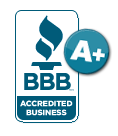Water Treatment Frequently Asked Questions
Planktonic Algae in Ponds
Many pond owners are familiar with the problems caused by filamentous algae. The stringy, fast-growing algae can cover a pond with slimy, lime-green clumps or mats in a short period of time. Fortunately, products are available to assist the owner in controlling filamentous Planktonic algae are another group of algae common to ponds. These algae are critical to a ponds food chain as they provide food for the microscopic animals that in turn are eaten by freshly-hatched fish fry. Occasionally, planktonic algae can bloom to nuisance levels which may necessitate using control methods.
What are Planktonic Algae?
Seasonal Abundance
When are Planktonic Algae a Problem?
What Causes a Nuisance Bloom?
Prevention and Treatment
When to Apply Aquatic Herbicides
Emergent Vegetation
Submerged Vegetation
Floating Vegetation Water Lilies, Water Lotus, Pennywort, and Watershield
Floating Vegetation Watermeal and Duckweeds
Duckweed and Watermeal: Prevention and Control.
Algae
Summary
Dyes and Aquatic Plant Management
Submerged aquatic plants and algae cause nuisance problems for many Ohio pond owners. Often, these owners are reluctant to use traditional aquatic herbicides or algaecides because of post-treatment water use restrictions or general concerns over using chemicals. Aquatic dyes offer an alternative that can significantly reduce plant and algae abundance in many ponds. They are safe to use, easy to apply, and relatively inexpensive. Dyes can be easily purchased at many garden centers and agricultural supply stores.
How Dyes Work
Like all plants, submerged aquatic plants and algae require nutrients and sunlight to flourish. These plants can grow only where sufficient light reaches the bottom of the pond or lake. This zone is called the photic zone. Beyond this zone, usually in deeper waters, plants cannot grow. Many factors affect how deep the photic zone extends, including plankton density, water color, and even wind.
In general, the more stained or colored the water, the shallower the photic zone. In some lakes and ponds, the water can be stained so dark by tannic acid from leaves or colored by a dense phytoplankton bloom that no submerged plants can grow except in the shallowest water.
Aquatic dyes work similarly by coloring the water a dark blue. The absorption and scattering of sunlight in the blue water significantly reduces the depth of the photic zone. This limits submerged plant and algae growth to only the shallowest areas of the pond or lake. For some pond owners, this reduction in plant biomass may be sufficient to meet their desired pond condition. Other pond owners may need to spot treat with herbicides and algaecides or introduce grass carp (white amur) to eliminate remaining plants.
Applying Aquatic Dyes
Aquatic dyes must be applied in March or early April to be effective for plant and algae control. The key to controlling aquatic plants is to prevent germination and limit early season growth. Because this occurs in April for most submerged plants and algae, the dye must be present to prevent germination. Late applications that occur after plants have grown several feet off of the pond bottom yield poor results. Sufficient sunlight will reach the top of the plants, allowing them to continue growing.
Application is as easy as pouring the dye into the water. It will quickly spread throughout the pond, usually within a few hours. Because the dye will naturally diffuse throughout the water, there is no need to use a sprayer. The applicator should take precautions to avoid getting the undiluted dye on skin or clothes, as it will stain.
The initial application in March will begin to fade in May or June, sometimes even earlier. Color is gradually lost due to rainwater dilution, photodegradation, and biodegradation. As the dye fades, sunlight reaches deeper water and can trigger plant germination there. This leads to a late summer aquatic plant or algae problem. Maintaining the correct level of blue color throughout the growing season can eliminate a late-season plant problem.
How does a pond owner know when more dye is required? The pond owner should regularly assess how much blue color is present in the water. This can be accomplished by measuring how far down a weighted white object on a string can be seen as it is lowered into the water. These readings should always be taken at the same location and at the same time of day. The first reading should be taken 48 hours after the initial application in March. This will serve as the baseline color level for the recommended application rate.
Every two weeks or so, the pond owner can re-measure the depth at which the white object disappears. Once the measured depth increases by roughly 25%, more dye should be added to bring the measured depth back to the baseline measurement. For example, if the baseline measurement in March was 24 inches, an increase to 30 inches in May should prompt additional dye being added to the pond.
Pond owners should try to maintain the desired color through August to prevent late summer plant or algae problems. As water cools in September, submerged plant and algae growth will slow considerably, and the residual color will continue to inhibit their growth during fall.
A pond with an existing abundant submerged plant or algae community should not be treated with dyes for the first time in late spring or summer. This will cause a substantial die-off of plants in deeper water where sunlight no longer reaches. These dying plants begin to decay and can cause a fish kill due to oxygen depletion.
Limitations
Summary
Contact Us
Have questions, comments, or concerns? Contact us or stop in.
15069 Blank Pike,
Wapakoneta, OH 45895
(419) 738-0167
(419) 738-1167
Office hours
Monday 9am - 5pm EST
Tuesday 9am - 5pm EST
Wednesday 9am - 2pm EST
Thursday 9am - 2pm EST
Friday 9am - 5pm EST
Saturday 7:30am - 2 pm EST
Sunday Closed



